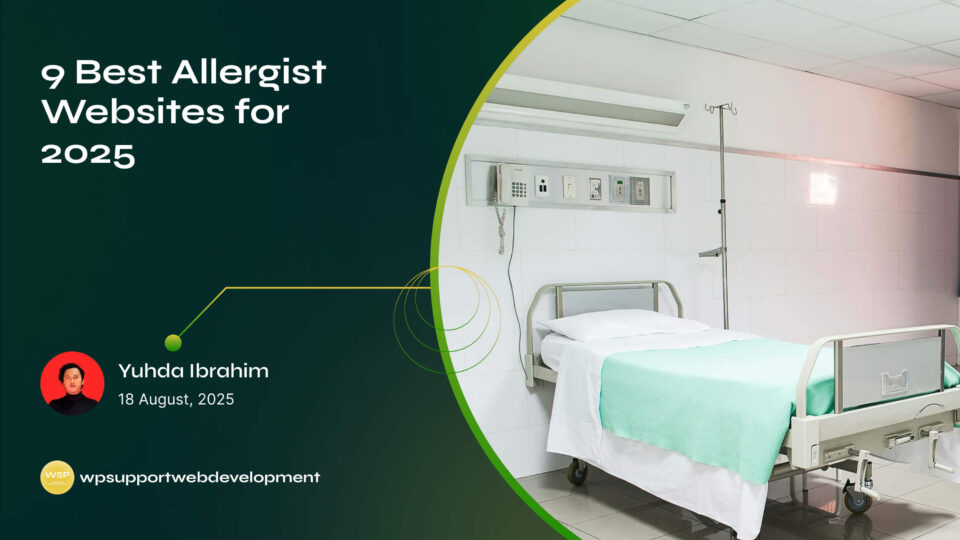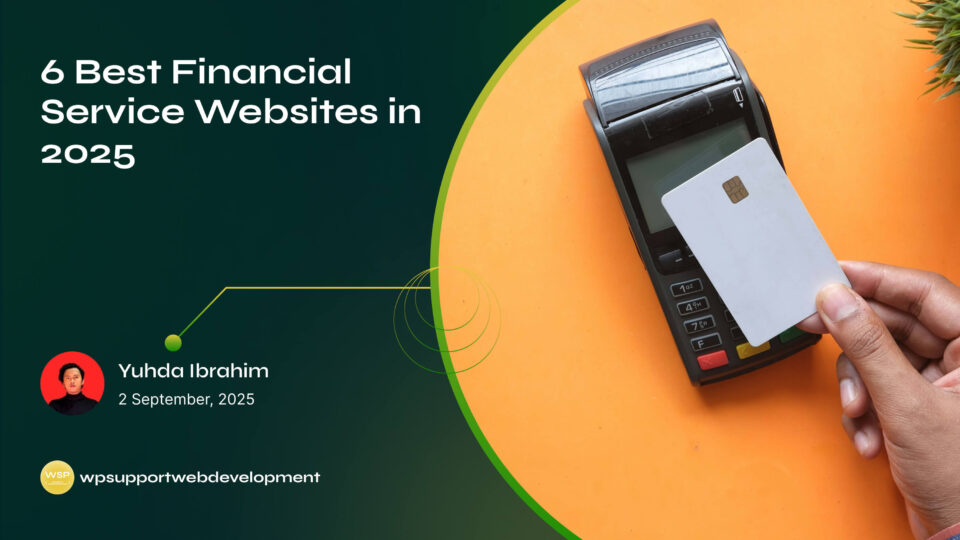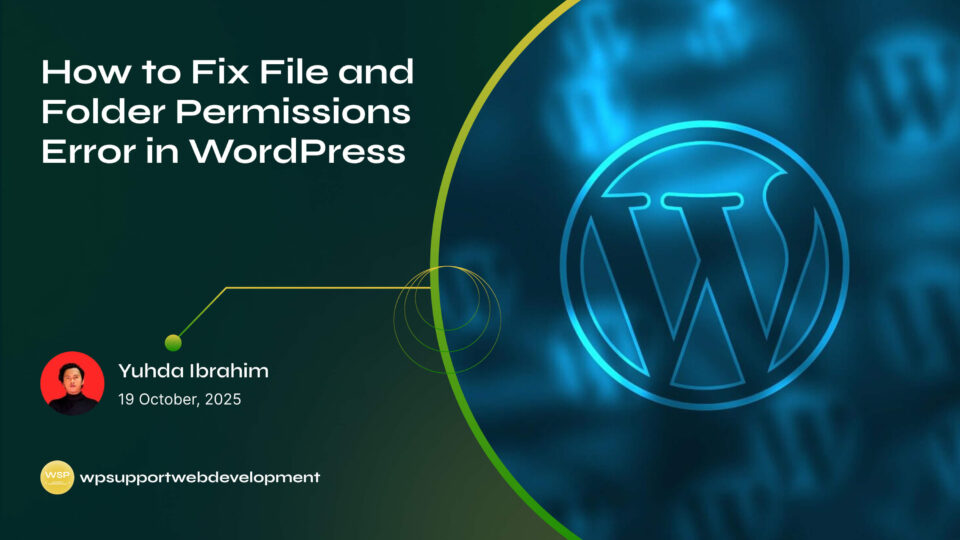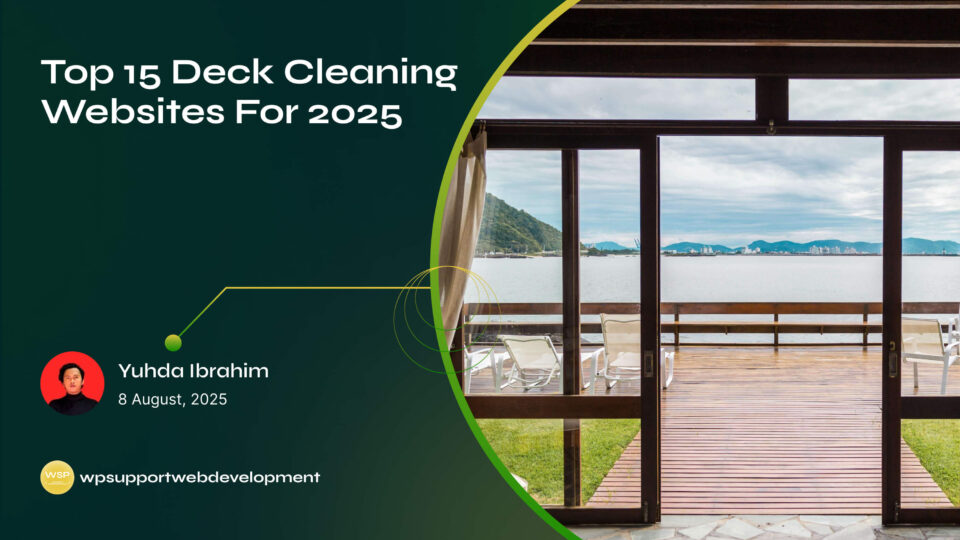How to Fix 401 Error in WordPress

Yuhda Ibrahim
Development Consultant
October 16, 2025
4 min read
Introduction
You’re trying to log into your WordPress site or access a page, and suddenly—bam!—you see a 401 error staring back at you. It usually reads something like “401 Unauthorized” or “Access is denied due to invalid credentials.” Not the friendliest message, right? If you’ve hit this wall, you’re not alone. Many WordPress users run into it, and it can be frustrating, especially when you know you’re entering the right username and password.
The good news is that a 401 error in WordPress doesn’t mean your site is broken. It usually happens when your site or server has trouble verifying permissions, logins, or security settings. The fix can be as simple as clearing browser cookies, or as detailed as adjusting plugin settings or server configurations.
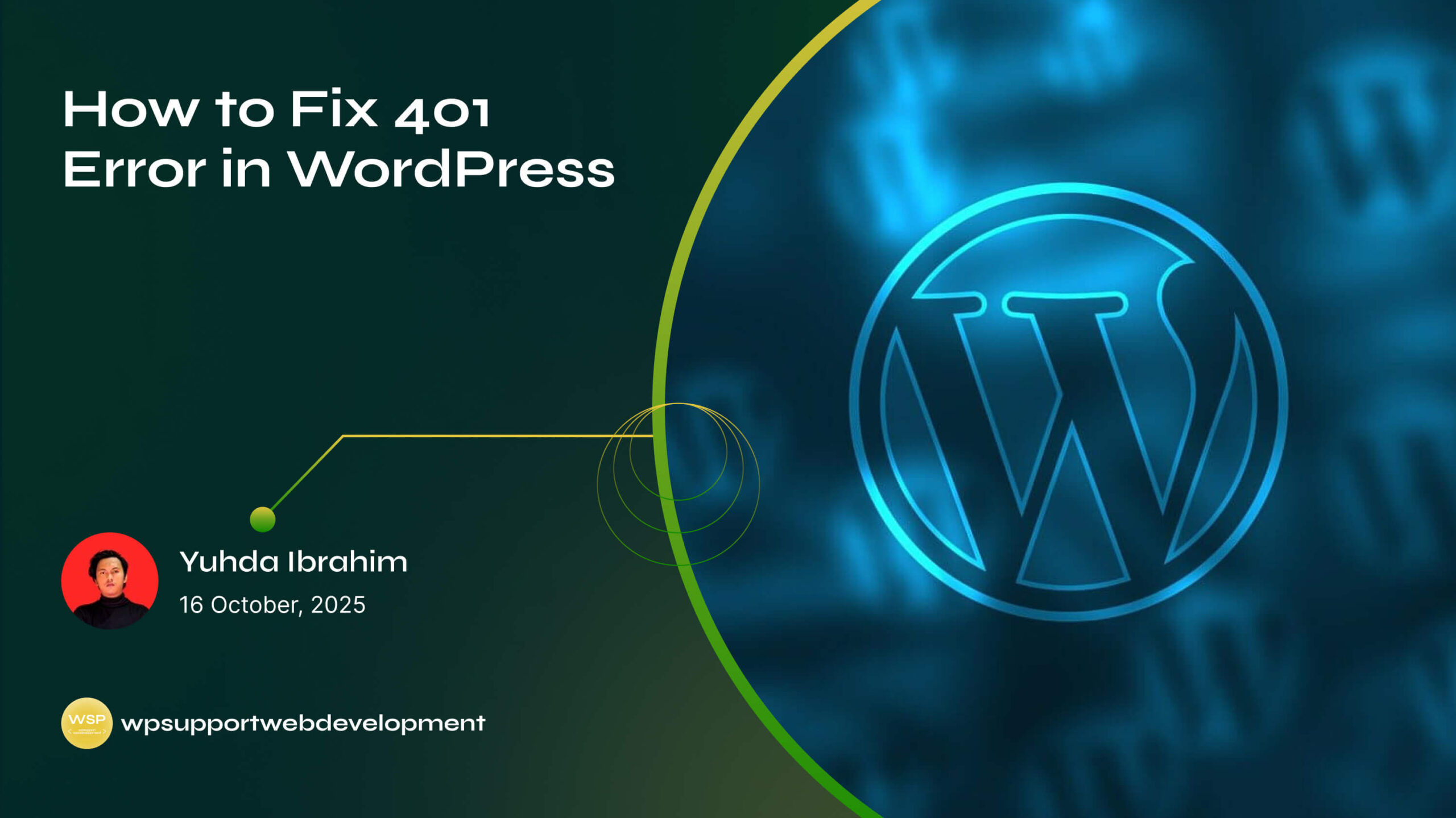
In this guide, we’ll walk through the most common causes of the 401 error in WordPress and provide practical steps to resolve it. You don’t need to be a tech wizard—just follow along, and you’ll have your site back up and running smoothly.
What Is a 401 Error in WordPress?
A 401 error means your server has denied access to a page because the request wasn’t properly authenticated. In plain English: WordPress (or your web server) thinks you don’t have the right permission to view the page—even if you actually do.
Common scenarios where it appears:
- Trying to log in to the WordPress dashboard.
- Accessing password-protected content.
- Using plugins or APIs that require authentication.
- Incorrectly configured
.htaccessor server settings.
Common Causes of the 401 Unauthorized Error
Before fixing the issue, it helps to know what triggers it. Here are the most frequent causes:
- Incorrect or cached login credentials.
- Corrupted browser cookies or cache.
- Security plugins blocking access.
- Misconfigured
.htaccessfile. - Expired or invalid authentication tokens (API-related).
- Server-side password protection interfering with WordPress.
Clear Browser Cache and Cookies
Sometimes, the solution is as easy as refreshing your browser’s memory.
- Clear cookies and cache in your browser settings.
- Try logging in again using Incognito/Private Mode.
- Test the site in another browser.
If the error disappears in a private window, cached login data was the problem.
Reset Login Credentials
Double-check that you’re using the correct username and password. If you’re locked out:
- Go to your hosting control panel or phpMyAdmin.
- Access the
wp_userstable in your WordPress database. - Update the password using MD5 encryption.
- Try logging in with the new credentials.
Alternatively, use the “Lost your password?” option on the login page if email recovery is set up.
Disable Security Plugins Temporarily
Overzealous security plugins like Wordfence, iThemes Security, or Sucuri may mistakenly block you.
To test this:
- Access your site via FTP or File Manager.
- Go to
/wp-content/plugins/. - Rename the folder of your security plugin (e.g.,
wordfence→wordfence_old). - Try logging in again.
If you regain access, adjust the plugin’s settings or whitelist your IP address.
Check and Reset the .htaccess File
A corrupted or misconfigured .htaccess file can easily cause a 401 error.
To reset it:
- Connect to your site via FTP.
- Find the
.htaccessfile in the root directory. - Rename it to
.htaccess_backup. - Log in to WordPress, go to Settings → Permalinks, and click Save Changes.
This creates a fresh .htaccess file with default rules.
Remove Server-Level Password Protection
Sometimes, hosting providers add password protection on directories (using .htpasswd). This can conflict with WordPress login.
- Log in to your hosting panel.
- Check for any directory password protections under Security or Advanced settings.
- Disable them temporarily and test if the error is gone.
If you need password protection for sensitive areas, configure it carefully to avoid conflicts.
Check API Authentication (If Using REST API or Third-Party Tools)
If the 401 error appears when using the REST API or third-party integrations:
- Verify your API key or authentication token.
- Make sure it hasn’t expired.
- Check whether HTTPS (SSL) is properly enabled.
- Confirm that your plugin or theme is sending the correct authentication headers.
For developers, tools like Postman can help test API requests separately.
Increase PHP Memory Limit
In rare cases, insufficient resources may trigger login or authentication errors. Boosting the PHP memory limit may help:
Edit your wp-config.php file and add:
define('WP_MEMORY_LIMIT', '256M');
This ensures WordPress has enough resources to handle processes smoothly.
Contact Your Hosting Provider
If you’ve tried all the above and the 401 error persists, the issue may be with your hosting environment. Some server-level firewall or mod_security rules could be blocking requests.
Reach out to your hosting support and provide details about when and where the error occurs. They can often pinpoint server logs that reveal the cause.
Conclusion
Running into the 401 error in WordPress can be frustrating, but the good news is it’s usually fixable with a few straightforward steps. From clearing browser cookies to disabling security plugins or resetting .htaccess, most fixes are quick and don’t require advanced technical skills.
If you’ve walked through all the steps and still see the error, it’s time to involve your hosting provider. They can check server logs and firewall rules to help restore access.
Remember: WordPress errors are common, but with a little troubleshooting, you can solve them and keep your site running smoothly.
